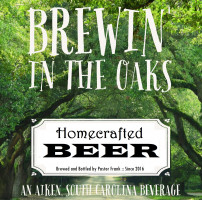Hops
|
Amount
|
Variety
|
Cost
|
Type
|
AA
|
Use
|
Time
|
IBU
|
Bill %
|
|
1 oz |
Hallertau Mittelfruh1 oz Hallertau Mittelfruh Hops |
|
Pellet |
3.75 |
Boil
|
60 min |
13.49 |
100% |
|
1 oz
/ $ 0.00
|
Hops Summary
|
Amount
|
Variety
|
Cost
|
IBU
|
Bill %
|
|
1 oz |
Hallertau Mittelfruh (Pellet) 0.99999999771257 oz Hallertau Mittelfruh (Pellet) Hops |
|
13.49 |
100% |
|
1 oz
/ $ 0.00
|
Mash Guidelines
|
Amount
|
Description
|
Type
|
Start Temp
|
Target Temp
|
Time
|
|
5 gal |
Maltose rest |
Strike |
160 °F |
145 °F |
35 min |
|
|
dextrinization rest |
Decoction |
145 °F |
160 °F |
45 min |
|
|
MASH OUT |
|
160 °F |
169 °F |
10 min |
Starting Mash Thickness:
2 qt/lb
Starting Grain Temp:
70 °F |
Priming
|
Method: co2
Amount: 14.69 psi
Temp: 35 °F
CO2 Level: 3 Volumes |
Target Water Profile
Aiken, South Carolina, USA, Silver Bluff Well
Notes
Water
The water for a Weissbier Hell should be soft and have a residual alkalinity around 0 ppm as CaCO3.
Here is a simple water recipe for brewers who build their own water:
30L (assuming 25L (6.25 gal) pre-boil volume) reverse osmosis water +
3.0g gypsum (CaSO4 2H2O)
2.4g calcium chloride (CaCl 2H2O)
(50 mg/L Ca; 0 mg/L Mg; 0 mg/L Na; 57 mg/L SO4; 43 mg/L Cl; 0 mg/L HCO3)
You may also use a water recipe that mimics the water at the brewing school Weihenstephan.
Grist
70% Wheat malt
3% Acidulated malt (Weyermann)
5% Cara Munich II (Weyermann)
22% Pilsner malt
Aim for a post boil gravity of 12.0 P (1.048 SG)
A nice alternative to this grist is replacing the 22% Pilsner and 5% Cara Munich with 27% Vienna or light Munich malt.
Hops
One addition of German hops worth about 40 mg/l alpha acid in the kettle full wort. This is about 1 g alpha acid in 25 l (6.6 gal) or 10 g 10% alpha acid hops in 25 l. The hops may be added before or after the wort comes to a boil. Boil time is 70 min.
Yeast
Wyeast 3068, propagated to yield about 50-70 g loose yeast slurry.
Mash
Hochkurz Mash:
Use a mash thickness of about 4 l/kg or 2 qt/lb. If you are using a hot water infusion to move from the maltose rest to the dextrinization rest aim for that mash thickness at the dextrinizaton rest. The mash out can be skipped if reaching it is too difficult.
Maltose rest : 63 C (145 F) for 35 min
dextrinization rest : 71 C (160 F) for 45 min
mash-out : 76 C (169 *F)
An alternate mash option is the addition of a ferulic acid rest at 45 C (113 F) for 45 min. This rest emphasizes the ferulic acid esterase which increases the ferulic acid content of the wort. This ferulic acid, which is present in both wheat and barley malt, is converted to 4-Vinylguaiacol (4VG) by the Weissbier yeast. 4VG gives the beer the clove flavor and aroma. If this rest is used the acidulated malt should be added once the Maltose rest temp is reached since the ferulic acid esterase has a pH optimum that is above 5.7. The higher pH also limits the activity of the protoelytic enzymes.
But even without this rest I have been able to brew great Weissbiers that have a lot of the characteristic clove flavor and most of the time I use the aforementioned Hochkurz mash. This mash can be conducted as a decoction, infusion or direct heated step mash.
Boil
Boil for 60-70 min and aim for a total boil-off of 10-15%. When the wort is standing hot for a while after flame-out it might be necessary to boil up to 90 min to reduce the potential of creating too much DMS during that time.
Chill too 13-15 C (55-60 F) and aerate to about 8 ppm oxygen.
Primary fermentation
Pitch the yeast into the cold wort and mix it in well. Make sure to pull a sample for a Fast Ferment Test and allow the temperature to rise naturally to 16-17 C (62-64F) where is should be held steady for the duration of the primary fermentation. Attaching a blow-off tube is advisable and necessary to remove the brown Kraeusen. The latter gives the beer a harsh taste if it is allowed to fall back into the beer.
Fermenting the beer too warm (20+ C/ 68+ F) may result in a more estery beer but oftentimes also in a beer that tastes thin and contains an excessive amount of higher alcohols.
On occasions brewers hear of a German rule of thumb that the pitching and fermentation temperature of a Weissbier should add up to 30. This is a rule that existed but it has been misinterpreted. The reference, which I found for this rule, refereed to the pitching temperature and the ambient temperature of the fermentation room. It was intend to keep the fermentation temperature from rising above 18 C (64 F) when small open fermented were used which were not temperature controlled [Narziss, 2005]. It is clear that this rule can not necessarily be applied to home brewing but, as with all beers, it is advisable to pitch Weissbiers below fermentation temperature.
The primary fermentation will take 3-5 days and is completed when the beer has reached the final gravity of the Fast Ferment Test. If bottle conditioning is used the primary fermentation may also be considered complete if the gravity of the beer is within ~0.7-0.8 Plato (~ 3 gravity points) of the FFT's final gravity.
Maturation
Lower the beer temperature to about 10 C (50 F) to allow most of the yeast to settle. The beer should be kept at this temperature for 7 to 10 days. After that time it may be transferred to a serving keg and carbonated or bottled and bottle conditioned.
Bottle conditioning
For bottle conditioning I prepare Kraeusen (i.e. freshly fermenting beer) that is added to the beer before is it bottled. This ensures plenty of healthy yeast for quick conditioning. For bottling with Kraeusen refer to this article: Kraeusening. You can calculate the necessary Kraeusen and extract/sugar additions with the carbonation calculation spreadsheet (US units|metric). This spreadsheet can also take residual fermentable extract of the beer into account.
Allow the bottles to condition at ~20-22 C (68-72 F) for about 7-10 days. The progress of carbonation can be evaluated by opening a bottle and testing its gravity. If it reached the final gravity of the FFT the conditioning process is complete. Then store them at cellar temperature and enjoy at a serving temperature of 6-8 C (45-46 F)
Sources
[Narziss, 2005] Prof. Dr. agr. Ludwig Narziss, Prof. Dr.-Ing. habil. Werner Back, Technische Universitaet Muenchen (Fakultaet fuer Brauwesen, Weihenstephan), Abriss der Bierbrauerei. WILEY-VCH Verlags GmbH Weinheim Germany, 2005

Last Updated and Sharing

- Public: Yup, Shared
- Last Updated: 2024-02-18 18:22 UTC
For quick copying and pasting to a text based forum or email.
Click the Download as HTML file button below.
Recipe costs can be adjusted by changing the batch size. They won't be saved but will give you an idea of costs if your final yield was different.
|
Cost $ |
Cost % |
| Fermentables |
$ |
|
Steeping Grains
(Extract Only) |
$ |
|
| Hops |
$ |
|
| Yeast |
$ |
|
| Other |
$ |
|
| Cost Per Barrel |
$ 0.00 |
|
| Cost Per Pint |
$ 0.00 |
|
| Total Cost |
$ 0.00 |
|
Discussion about this recipe:
